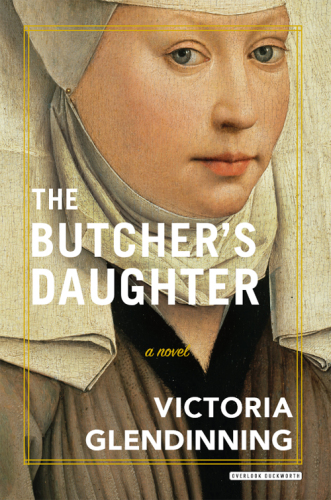
The Butcher's Daughter
A Novel
کتاب های مرتبط
- اطلاعات
- نقد و بررسی
- دیدگاه کاربران
نقد و بررسی

May 15, 2018
When Agnes Peppin enters the cloister at Shaftesbury Abbey in 1535, she expects to live out the rest of her days as part of a quiet community of nuns. It isn't long, however, before whispers of coming cataclysmic change reach her ears. Following his break with the Catholic Church, Henry VIII dissolves the kingdom's religious houses, and Agnes must try to find a new place for herself in the tumultuous world outside the abbey's walls. Shrewdly intelligent and curious, Agnes takes to the road and explores several potential paths, always constrained by the Tudor period's rigid expectations for even the brightest women. Though this era is a popular one for historical fiction, novelist and biographer Glendinning (Electricity; Flight) finds a fresh perspective by setting her book entirely away from the royal court. Agnes's tale unfolds more as a meandering series of vignettes than as a story with a compelling central conflict, but Glendinning's research convincingly depicts the bustling and frequently ruthless world of Henry VIII's England. Readers will enjoy Agnes's wry and frequently irreverent commentary on her encounters. VERDICT Recommended for fans of literary historical fiction in the vein of Hilary Mantel's Wolf Hall or Rose Tremain's Restoration.--Mara Bandy Fass, Champaign P.L., IL
Copyright 2018 Library Journal, LLC Used with permission.

May 15, 2018
Most people in sixteenth-century England weren't royalty or famous, yet a focus on the well known predominates in historical novels. Evincing deep knowledge of Tudor-era society, award-winning biographer and writer Glendinning helps remedy this skewed perspective by centering on a young woman left homeless after Henry VIII's dissolution of the monasteries and forced back into a world that slots women into tidy, repressive categories. In 1535, the witty, curious Agnes Peppin is sent to Shaftesbury Abbey after bearing an illegitimate child and finds a home among the nuns. Agnes is literate, and as the abbess' assistant she is in a prime place to see Thomas Cromwell's destructive plans for England's religious houses coming to fruition. Glendinning's psychologically astute novel shows how significant an upheaval this was. Monasteries and abbeys served as social safety nets and economic engines, and their residents' heartbreak and confusion are palpable as the sanctuaries are dismantled. Agnes' sudden freedom, both a burden and an opportunity, sets her on an entertaining, picaresque journey toward self-fulfillment across England's West Country. Through the experiences of Agnes and others, Glendinning thoughtfully explores womanhood's many facets.(Reprinted with permission of Booklist, copyright 2018, American Library Association.)

























دیدگاه کاربران